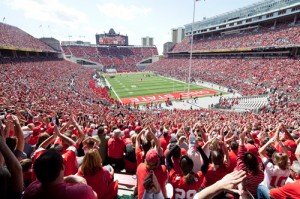 Columbus Population 2013
Columbus Population 2013
The current population of the city of Columbus, Ohio is estimated to be about 809,798, which is an increase of about 1.6% from the last record of the population. Columbus is the most populous city in the state of Ohio and the fifteenth-most populous city in the entire United States of America. Based on the total land area and the total population of the city, the population density of Columbus is about 3,624 people per square mile.
Demographics of Columbus
About 8% of the population is under the age of 5 years, while about 9% of the population is 65 years and older. Also, about 51.2% of the population is female, while about 48.8% of the population is male.
The largest racial demographic is the white group, which makes up about 59% of the population. The next largest race is the Black or African American demographic, which makes up about 28% of the population. The Hispanic or Latino group makes up about 6% of the population. The Asian population makes up about 4% of the population.
About 88% of the population, ages 25 years and older, has at least a high school diploma. Also, about 32% of the population, ages 25 years and older, has at least their bachelor’s degree from some college or university.
Religion in Columbus
The population of Columbus identifies with a religious affiliation at a lower rate than the national average. About 40% of the population identifies with an affiliation, compared to the national average of 49%. The largest religious affiliation in the city is the Roman Catholic Church, making up about 14% of the population. The next largest affiliation is the Baptist Church, which makes up about 5% of the population. The Muslim population of the city is larger than the average city in the United States. About 1.3% of the population identifies with the Islamic religion.
Ohio State University
Ohio State University, commonly referred to as Ohio State or OSU, is a public research university in Columbus, Ohio. Founded in 1870, as a land-grant university and ninth university in Ohio with the Morrill Act of 1862, the university was originally known as the Ohio Agricultural and Mechanical College. The college began with a focus on training students in various agricultural and mechanical disciplines but was developed into a comprehensive university under the direction of Governor Rutherford B. Hayes and by 1878, the college changed its name to its current name. It has since grown into the third largest university campus in the United States. In 2007, Ohio State was officially designated as the flagship institution of Ohio’s public universities as part of the newly centralized University System of Ohio. It is considered to be one of America’s Public Ivy universities, which recognizes top public research universities in the United States. Along with its main campus in Columbus, Ohio State also operates a regional campus system with regional campuses in Lima, Mansfield, Marion, Newark, and Wooster.
 Sports in Columbus
Sports in Columbus
The city of Columbus has two major professional sports teams: Columbus Crew and Columbus Blue Jackets. The Columbus Crew participates in Major League Soccer in Columbus Crew Stadium. The stadium is, in fact, the first stadium in the United States built solely for soccer. The Columbus Blue Jackets participate in the National Hockey League and they play in Nationwide Arena. Columbus is also home to the famous Ohio State University. Ohio Stadium in Columbus is the seventh-largest non-racing stadium in the entire world. The Buckeyes participate in NCAA Big Ten Conference and the football team plays in Ohio Stadium.
Columbus Ohio Travel Guide
Historical Population of Columbus
Over the course of the last few decades, the population of Columbus has shown significant growth, especially from 1999 to 2000. Also, while many cities show population decrease from 2009 to 2010, Columbus actually shows growth during those years. Lastly, while the populations of Cleveland and Cincinnati have been declining, Columbus’ population has increased.
| Year | Population |
| 1990 | 638,446 |
| 1991 | 646,504 |
| 1992 | 652,335 |
| 1993 | 656,594 |
| 1994 | 659,353 |
| 1995 | 660,928 |
| 1996 | 663,307 |
| 1997 | 668,808 |
| 1998 | 670,031 |
| 1999 | 671,241 |
| 2000 | 715,971 |
| 2001 | 723,822 |
| 2002 | 727,909 |
| 2003 | 733,706 |
| 2004 | 735,971 |
| 2005 | 738,782 |
| 2006 | 744,473 |
| 2007 | 750,700 |
| 2008 | 759,360 |
| 2009 | 769,332 |
| 2010 | 788,696 |
| 2011 | 797,434 |


